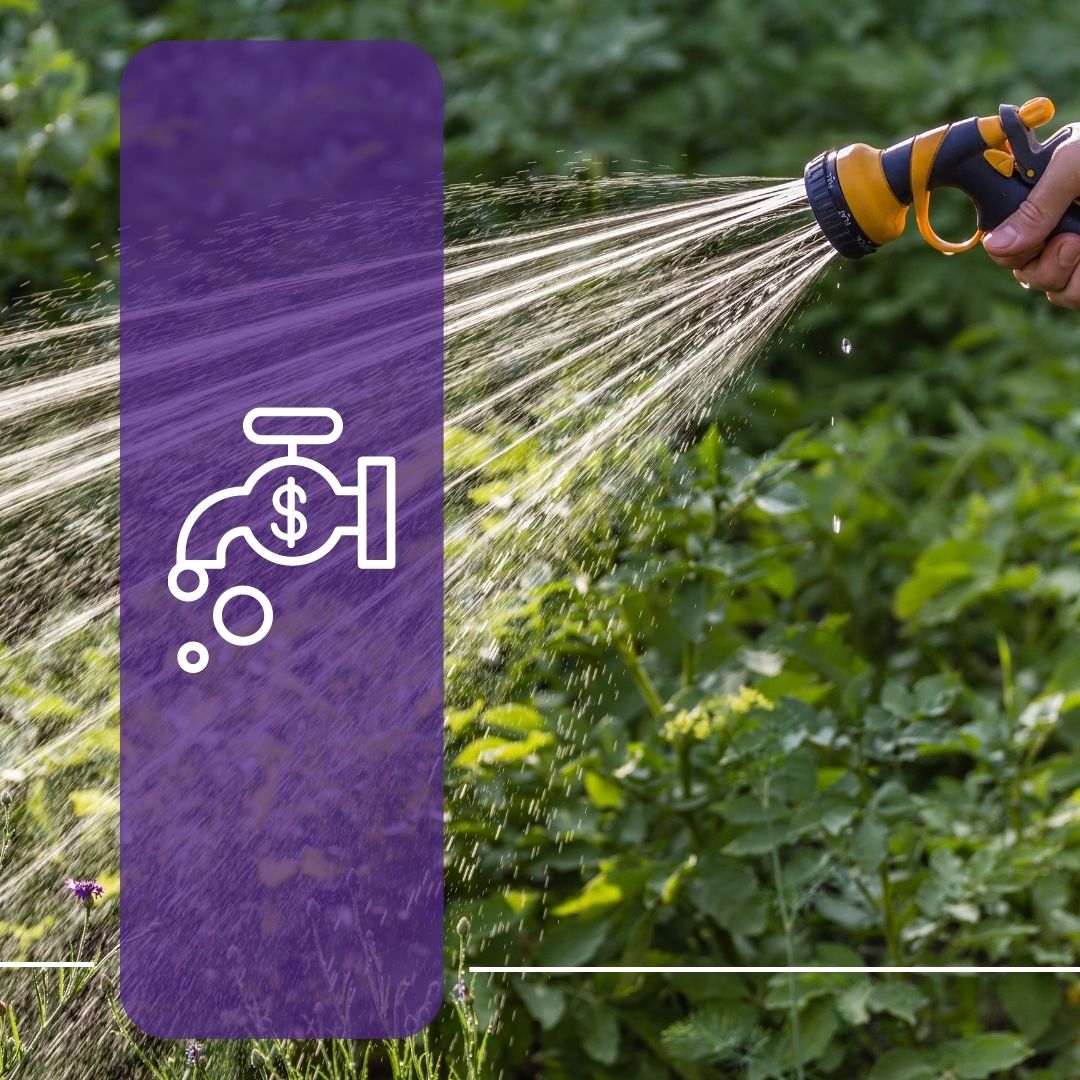Lower Your Water Bill
by Sharon Ashworth
Horticulture & Natural Resources Agent
Did you catch the headlines in the local papers about water utility rate increases that may be in store for Lawrence residents? Regardless of where you live, using water costs money. More importantly, water is a critical resource we can’t afford to waste.
If you have a lawn and/or a garden, nearly one-third of your water consumption is likely for irrigation (nationwide average according to the EPA). By watering your lawn efficiently, water consumption for irrigation can be reduced by up to 50 percent with only a 10 percent reduction in turf quality. The baseline recommendation for a healthy lawn is to apply one inch of water once a week. It takes approximately 624 gallons of water to apply one inch of water to 1,000 sq. ft. This is enough water to soak the soil down to about 6 inches to encourage strong root growth. So how can you judge when you are achieving this goal for your lawn?
- Figure out what 1 inch is by running your sprinkler until it fills up a 1-inch deep tuna or pet food can – this will be a good
 approximation of how long you need to run your sprinkler to get one inch of water. If you’ve got heavy clay soils, you will likely need to do this across multiple soakings to give water time to soak in without running off the landscape onto the sidewalk or street.
approximation of how long you need to run your sprinkler to get one inch of water. If you’ve got heavy clay soils, you will likely need to do this across multiple soakings to give water time to soak in without running off the landscape onto the sidewalk or street. - Use a long screwdriver to measure the depth of soil that is moist after watering. The screwdriver will move through moist soil relatively easily and stop when it hits dry soil.
- Buy a rain gauge and measure precipitation so that you know when you should water your lawn. If you have an irrigation system, consider installing a soil moisture sensor for proper watering. Don’t rely on a regular schedule or timed irrigation system to water your lawn.
- Water in the morning and do not use a sprinkler that produces a fine mist (otherwise, not much water will make it to the soil surface in the afternoon heat and wind).
You can take steps now to reduce the amount of water you use for your lawn next year. The goal is healthy soil because healthy soil retains more moisture.
- Have your soil tested for proper fertilization. Bring a soil sample into the Extension office for a free soil analysis (up to two samples for homeowners so long as the grant in place is active).
- Aerate the soil in the fall. You can rent a core aerator or use a tool that has at least 3-inch spikes (something like a broadfork) to create pores in the soil. Creating these pores is the best way to reduce compaction, allowing improved movement of water and nutrients into the root zone of the lawn. If your lawn has more than 1/2 an inch of thatch, de-thatch your lawn as well.
- Spread a thin layer (1/8 to 1/4 inch) of compost over the lawn after aerating and de-thatching. Don’t bag your grass clippings, they are free nutrients for your soil.
- Overseed grass seed if your grass is thin or you have bare spots.
- Fertilize according to the recommendations given in your soil test results.
In the spring, mind your watering with the rain gauge and adjust your watering to apply 1-inch of water per week. Mow high, at least 3-inches for fescue lawns. Do not apply a spring fertilizer and make plans to let your grass go dormant over the summer by reducing watering to ½ inch over the course of 2-3 weeks if it has not rained. Your lawn will turn brown, but it is just dormant and will green up again when cooler weather returns.
For more information, refer to the K-State publication “Maintaining Good Lawns with Less Water” or “Water Conservation in the Home Landscape”. If you want to reduce your water use even further, plant a buffalo grass lawn if you’ve got a sunny yard. For more information, refer to the K-State publication “Buffalograss Lawns”.
